
1.800.833.7958
► Español
► 中文
- PRODUCTS
- Water Sampling
- Groundwater Level & Flow
- Water Quality Equipment
- Water Sample Filtration
- Geophysical Measurements
- Handheld XRF Analyzers
- Unmanned Aircraft Systems
- Air Quality Instruments
- Soil Sampling Equipment
- Remediation Equipment
- Telemetry Solutions
- Industry Specific Equipment
- Field Equipment & Supplies
- Used Equipment Specials
- Product Specification Downloads
- RENTALS
- SALES & SERVICE
- CUSTOMER SUPPORT
- GEO NEWS
- ABOUT GEOTECH
Water Quality Instruments
Onsite measurement is necessary to preserve sample integrity and ensure data accuracy for the following field measurements: water temperature, dissolved-oxygen (DO) concentration, specific electrical conductance (SC), pH, and reduction-oxidation potential (redox/ORP).
| Water Quality Field Measurements |
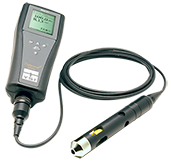 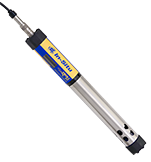 |
A variety of single-parameter and multiparameter field-measurement instruments are available that use various technologies to measure the same water property and that require differing calibration, maintenance, and measurement methods.
| YSI Multiparameter Datalogging Sondes | 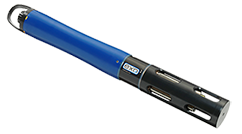 |
Multiparameter instruments that contain sensors (each specific to the measurement of a given physical, chemical, or biological property) that are bundled in a single housing (a sonde) and deployed in environmental waters.
Advantages of Multiparameter Sondes:
- Efficiency is increased. Instruments are easy to clean, calibrate, and deploy.
- The time required to collect discrete samples for determining field properties is minimized.
- The time needed to measure and record multiple field properties is reduced.
- In situ measurement is likely to be more accurate and precise than measurements made in samples removed from their source.
- Instruments can store data, either in a display device or to internal memory.
- Instruments may be capable of longterm deployment.
| Portable Turbidity Meters |  |
Turbidity, which can make water appear cloudy or muddy, is caused by the presence of suspended and dissolved matter, such as clay, silt, finely divided organic matter, plankton and other microscopic organisms, organic acids, and dyes. The color of water, whether resulting from dissolved compounds or suspended particles, can affect a turbidity measurement.
The following are examples of the uses for turbidity data:
- Regulating and maintaining drinking water clarity.
- Determining water clarity for aquatic organisms.
- Indicating visual impairment in water.
- Real-time monitoring that indicates watershed conditions.
- Developing surrogates for concentration of suspended sediment (SSC) and other constituents.
- Monitoring the effects of land development and related human activities and subsequent management of natural resources.
- Determining transport of contaminants associated with suspended materials.
| Geotech Data Buoy Systems |
 |
Geotech data buoy systems are unique data collection platforms designed for Met and surface water quality monitoring. Geotech buoys feature a modular design that adapts to a variety of application and sensor installations. Many of the platforms are solar powered – with panels positioned to maximize solar exposure and reflection.
Water Quality Parameters
pH, ORP, Conductivity, Dissolved Oxygen, Turbidity, Ion Selective Electrodes (ISE), Temperature, Water Level, and more.
Meteorological Parameters
Air Temperature, Humidity, Barometric Pressure, Wind Speed & Direction
Data Access
Data from the Buoy can be transmitted real-time and/or stored internally.
| Seametrics Water Quality Sensors | 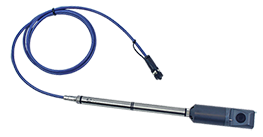 |
Often the changes in water measurements are more important than the actual measured values. Depending on the manufacturer, some instruments can store instantaneous or continuous measurements to internal or external memory in a format compatible with a hand-held display, personal digital assistant (PDA), or laptop computer.
| Colorimeters, Photometers and Test Strips |  |
Colorimeters and Photometers are used to analyze samples of water, suspended sediment, and bottom material for their content of inorganic and organic constituents.
Test strips are an economical way to perform spot checks for water quality. They change color when exposed to the factor of interest.
In general, a colorimetric procedure involves adding some type of chemical (or “reagent”) to a sample of water. The reagent then reacts with the substance we are trying to measure, causing a color change in the sample.
The following are applications of Colorimetric analysis:
- Determination of presence and quantity of impurities in water.
- Determination of presence and amounts of metals in water.
| Calibration Buffers, Standards, Reagents and Cleaners |  |
Reference materials whose properties have been established so that it can provide a level of performance verification. For field measurements, examples are pH buffers, specific conductivity standards, chemical reagents, turbidity standards and oxidation reduction potential standards.
Field instrumentation require supplies for the actual collection process as well as quality control activities and crucial operational maintenance.
| YSI Monitoring Buoys, Platforms, and Autonomous Systems |
 |
Well-designed monitoring networks allow organizations to concentrate on data analysis, modeling, and decision making. We understand unique situations demand custom solutions, that's why our team has design, instrumentation, and control experience in natural resource, environmental, municipal, industrial, compliance and process monitoring.
| WaterLOG® Data Logging & Hydro-Meteorological Sensors | 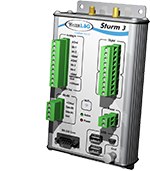 |
WaterLOG® is a world leader specializing in manufacturing precision water level instrumentation, and data logger telemetry systems for hydrological and meteorological measurements. They provide a broad range of innovative equipment capable of reliable measurements in extremely harsh conditions. Instrumentation applications range from flood warnings, surface water, storm water, ground water, irrigation, meteorology and many others. Customers are hydro-meteorologists, scientists and anyone who needs to collect water level measurement in a range of applications.